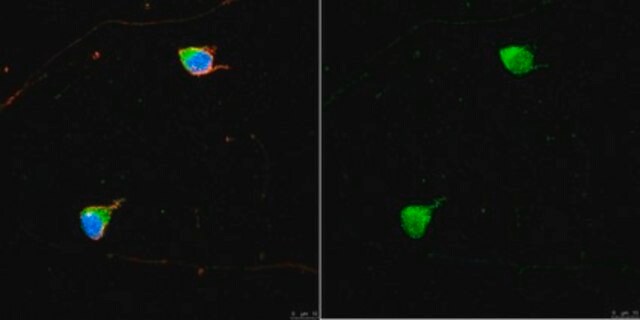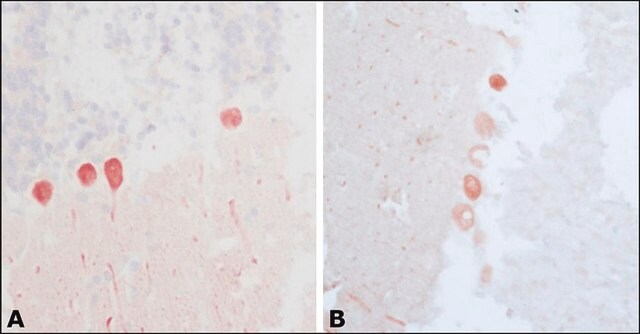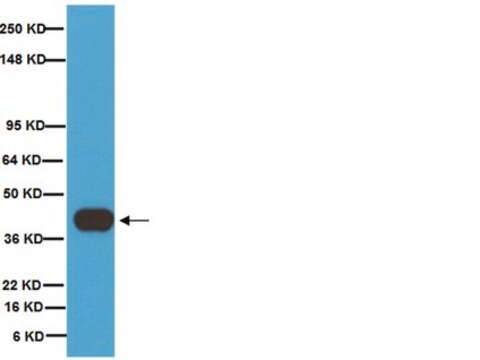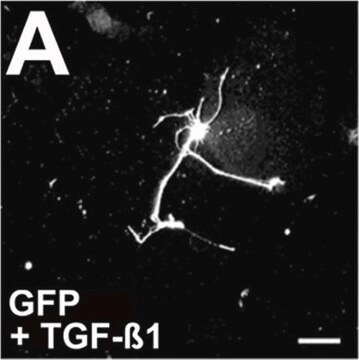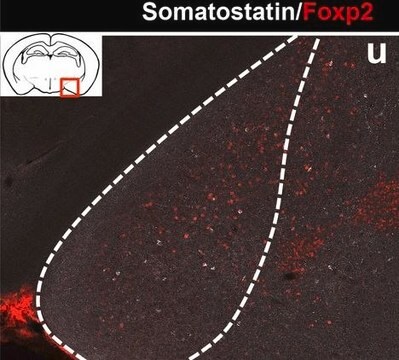MAB1568
Anti-Calretinin Antibody, clone 6B8.2
clone 6B8.2, Chemicon®, from mouse
Synonym(s):
calbindin 2, calbindin 2, (29kD, calretinin)
About This Item
Recommended Products
biological source
mouse
Quality Level
antibody form
purified immunoglobulin
antibody product type
primary antibodies
clone
6B8.2, monoclonal
species reactivity
mouse, rat
manufacturer/tradename
Chemicon®
technique(s)
immunohistochemistry: suitable
western blot: suitable
isotype
IgG1
NCBI accession no.
UniProt accession no.
shipped in
wet ice
target post-translational modification
unmodified
Gene Information
human ... CALB2(794)
General description
Specificity
Immunogen
Application
On rat brain tissue:
IFA: 1:1,000-1:5,000
PAP: 1:1,000-1:5,000
The antibody has been used successfully on formalin-fixed, paraffin embedded human tissue after pre-treatment of the tissue slides with citrate buffer and heat treatment. Suggested starting dilution 1:100-1:400. Proteolytic digestion with pepsin is detrimental to the immunostaining.
Western blot:
1:1,000-1:3,000
Optimal working dilutions must be determined by the end user.
Neuroscience
Signaling Neuroscience
Quality
Western Blot Analysis:
1:1000 dilution of this lot detected Calretinin on 10 μg of mouse brain lysates.
Target description
Physical form
Storage and Stability
Analysis Note
Rat brain cortex, Mesothelioma tissue, mouse brain lysate.
Other Notes
Legal Information
Disclaimer
Not finding the right product?
Try our Product Selector Tool.
recommended
Storage Class Code
10 - Combustible liquids
WGK
WGK 2
Flash Point(F)
Not applicable
Flash Point(C)
Not applicable
Certificates of Analysis (COA)
Search for Certificates of Analysis (COA) by entering the products Lot/Batch Number. Lot and Batch Numbers can be found on a product’s label following the words ‘Lot’ or ‘Batch’.
Already Own This Product?
Find documentation for the products that you have recently purchased in the Document Library.
Our team of scientists has experience in all areas of research including Life Science, Material Science, Chemical Synthesis, Chromatography, Analytical and many others.
Contact Technical Service

